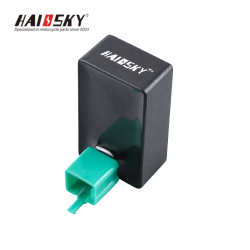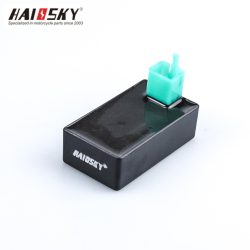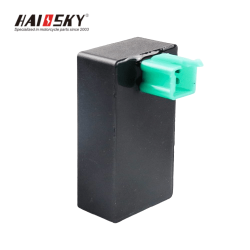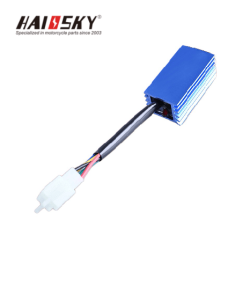OEM Motorcycle Parts
Category: Motorcycle CDI Units - Programmable Ignition Modules
The Ultimate Guide to Motorcycle CDI: Everything You Need to Know
When it comes to the ignition system of a motorcycle, the CDI (Capacitor Discharge Ignition) is a critical component that ensures your engine runs smoothly and efficiently. For B2B wholesalers and motorcycle enthusiasts, understanding the ins and outs of motorcycle CDI systems is essential. In this guide, we’ll dive deep into their purpose, types, maintenance, and more, while optimizing for the keyword “motorcycle CDI” to help you make informed decisions for your business or customers.
What is a CDI on a Motorcycle?
The CDI (Capacitor Discharge Ignition) is an electronic ignition system used in motorcycles to control the timing and intensity of the spark that ignites the air-fuel mixture in the engine’s combustion chamber. It replaces traditional contact breaker points with a capacitor that stores and discharges energy to the ignition coil, creating a high-voltage spark. This system is known for its reliability, efficiency, and ability to handle high engine speeds, making it a popular choice for modern motorcycles.
Types of Motorcycle CDI Systems
Motorcycle CDI systems come in various types, each designed to meet specific performance and operational needs. Here’s a breakdown of the most common types:
1. Capacitor Discharge Ignition (CDI)
This is the most common type of CDI system. It uses a capacitor to store energy from the charging circuit and discharges it during the ignition moment to generate a spark. CDI systems are known for their quick engine response and ability to handle high revs, making them ideal for performance-oriented motorcycles.
2. Inductance Discharge Ignition (IDI)
Similar to CDI, IDI systems use inductors to store energy instead of capacitors. They are commonly found in older motorcycles and provide reliable ignition timing. However, they are less efficient at high engine speeds compared to CDI systems.
3. Transistor-Controlled Ignition (TCI)
TCI systems use transistors to control the ignition timing and spark intensity. This allows for finer adjustments, leading to better engine performance and fuel efficiency. TCI systems are often used in motorcycles with advanced engine management systems.
4. Solid-State Ignition (SSI)
SSI systems use solid-state components like diodes and thyristors to control the ignition process. They are highly reliable, require minimal maintenance, and are commonly used in modern motorcycles.
5. Variable Ignition Timing CDI
Some high-end motorcycles feature CDI systems with variable ignition timing. These systems adjust the ignition timing based on factors like engine speed, load, and temperature, ensuring optimal combustion and performance in all operating conditions.
Can a Motorcycle Run Without a CDI?
No, a motorcycle cannot run without a CDI. The CDI is an essential component of the ignition system, responsible for generating the high-voltage spark needed to ignite the air-fuel mixture in the engine. Without a functioning CDI, the engine will not start or run smoothly.
What Happens if a CDI Goes Bad?
A faulty CDI can cause a range of issues, including:
Difficulty Starting: The engine may struggle to start or fail to start altogether.
Engine Misfires: The engine may misfire or run unevenly due to inconsistent spark timing.
Loss of Power: The motorcycle may experience a noticeable loss of power and performance.
Erratic Engine Behavior: The engine may run erratically or stall unexpectedly.
If you notice any of these symptoms, it’s time to inspect or replace the CDI.
What is the Purpose of a CDI?
The primary purpose of a CDI is to control the ignition timing and generate the high-voltage spark needed to ignite the air-fuel mixture in the engine’s combustion chamber. By ensuring precise timing and a strong spark, the CDI helps optimize engine performance, fuel efficiency, and emissions.
How Do I Know if My CDI is Broken?
Here are some common signs of a faulty CDI:
No Spark: If the spark plug fails to produce a spark, the CDI may be defective.
Intermittent Spark: A weak or inconsistent spark can indicate a failing CDI.
Engine Misfires: Misfires or rough idling can be caused by incorrect ignition timing.
Difficulty Starting: If the engine struggles to start or fails to start, the CDI could be the culprit.
Check Engine Light: Some motorcycles have a check engine light that may illuminate if there’s an issue with the ignition system.
To confirm, you can perform a spark plug inspection or use a multimeter to test the CDI’s output voltage.
How Long Does a Motorcycle CDI Last?
The lifespan of a motorcycle CDI depends on factors like usage, maintenance, and environmental conditions. On average, a CDI can last anywhere from 5 to 10 years. However, exposure to moisture, heat, or electrical issues can shorten its lifespan. Regular inspection and maintenance can help extend its longevity.
Maintenance Tips for Motorcycle CDI
To ensure your CDI lasts as long as possible, follow these maintenance tips:
Regular Inspection: Check the CDI for signs of damage, corrosion, or loose connections.
Keep It Dry: Moisture can damage the CDI. Ensure it’s installed in a dry location and protected from water exposure.
Avoid Overheating: Ensure the CDI is not placed too close to the engine or exhaust to prevent heat damage.
Secure Wiring: Check that all wiring connections are secure and free from corrosion.
Clean Regularly: Use a damp cloth to clean the exterior of the CDI and remove any dust or debris.
How to Choose the Right Motorcycle CDI
When selecting a CDI for your inventory or customers, consider the following factors:
Compatibility: Ensure the CDI matches the motorcycle’s make, model, and engine specifications.
Voltage Output: Choose a CDI with the appropriate voltage output for the ignition system.
Performance Needs: For high-performance motorcycles, opt for a CDI with advanced timing curves and higher voltage output.
Quality and Brand: Stick to reputable brands known for producing reliable and durable CDI units.
Budget: CDIs come in various price ranges. Compare options within your budget to find the best value.
How to DIY and Replace a Motorcycle CDI
Replacing a CDI is a straightforward process. Here’s a step-by-step guide:
Tools Needed:
Screwdriver set
Wrench
Multimeter (optional)
Steps:
Locate the CDI: The CDI is typically located under the seat or behind the side panel.
Disconnect the Battery: Start by disconnecting the negative terminal of the battery to prevent electrical shorts.
Remove the Old CDI: Unscrew or unbolt the old CDI and disconnect the wiring harness.
Install the New CDI: Connect the wiring harness to the new CDI and secure it in place with screws or bolts.
Reconnect the Battery: Reconnect the battery and test the motorcycle to ensure the new CDI is functioning properly.
FAQs About Motorcycle CDI
Q: Can a CDI be repaired?
A: While it’s challenging to repair a CDI due to its complex circuitry, some components can be replaced. However, replacement is often the most reliable solution.
Q: What’s the difference between CDI and TCI?
A: CDI uses capacitors to store and discharge energy, while TCI uses transistors to control ignition timing. TCI systems offer finer adjustments and better performance in some cases.
Q: Can I upgrade my motorcycle’s CDI?
A: Yes, upgrading to a high-performance CDI can improve ignition timing and engine performance, especially for racing or high-performance motorcycles.
Final Thoughts
The motorcycle CDI is a vital component that ensures your bike’s engine runs smoothly and efficiently. By understanding its purpose, types, and maintenance requirements, you can keep your customers’ motorcycles performing at their best. At Haissky.com, we offer a wide range of high-quality CDI units to meet the needs of B2B wholesalers and riders alike. Explore our catalog today and keep the engines roaring!











